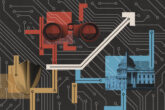April 13, 2018
How network tools can improve base security
In 2011, the simple exploitation of an existing data set could have prevented a near disaster in northern Afghanistan.
Then, an entire operations center watched as the feed from an MQ-1 drone, newly reassigned from its original mission, displayed a growing group of protesters at the perimeter of a small U.S. forward operating base. Although conventional signals intelligence indicated a possible disturbance, full-motion video confirmed the severity of the threat only well after it had matured. Intelligence analysts didn’t understand what the protestors were doing — and why they were doing it — until they had already massed at the entry point. If used properly, automated social media monitoring and geofencing, which calls for creating virtual geographic boundaries, could have filled this critical gap in situational awareness.
Read the full article at C4ISRNET
More from CNAS
-
Transatlantic Security / Technology & National Security
Look Before We Leap on Artificial IntelligenceThis article was originally published on The Dispatch. A debate about the role that artificial intelligence should and will play in society, and how it will affect humanity fo...
By Jon B. Wolfsthal
-
Technology & National Security
Caleb Withers on the Cybersecurity Frontier in the Age of AICaleb Withers, research associate at the Center for a New American Security, joins Kevin Frazier, the AI Innovation and Law Fellow at the University of Texas School of Law and...
By Caleb Withers
-
Technology & National Security
Prepared, Not ParalyzedExecutive Summary The Trump administration has embraced a pro-innovation approach to artificial intelligence (AI) policy. Its AI Action Plan, released July 2025, underscores t...
By Janet Egan, Spencer Michaels & Caleb Withers
-
Indo-Pacific Security / Technology & National Security
Sharper: Tech + ChinaRecent talks between President Donald Trump and Chinese Communist Party General Secretary Xi Jinping placed a spotlight on emerging technologies, from high-end chips to minera...
By Charles Horn & Sevi Silvia




